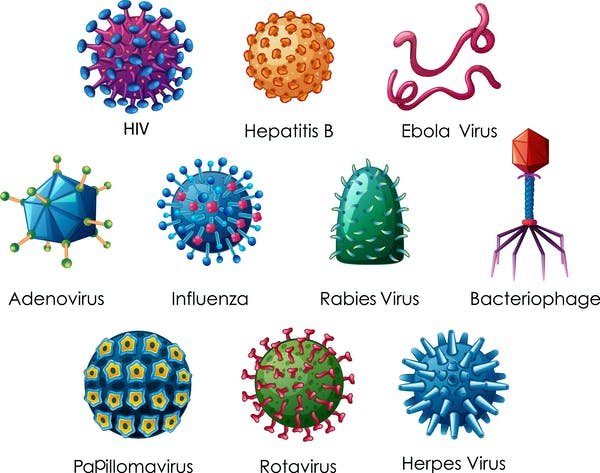Understanding virus symptoms is crucial for prompt diagnosis and effective treatment. Viruses are tiny infectious agents that replicate inside the cells of an organism, causing a wide range of diseases. The symptoms of a viral infection can vary significantly depending on the type of virus, the part of the body it affects, and the individual’s overall health.
Introduction to Virus Symptoms
Viral infections can affect anyone, regardless of age, gender, or health status. They can spread through various means such as direct contact with an infected person, contaminated food or water, or through vectors like mosquitoes and ticks. The human body reacts to viral infections by triggering an immune response, which often leads to the manifestation of symptoms.
Common Virus Symptoms
While the specific symptoms can vary widely among different viral infections, there are several common symptoms that many viral infections share. These include:
- Fever: An elevated body temperature is a common response to viral infections as the body tries to create an environment less conducive to the virus’s replication.
- Fatigue: Feeling extremely tired is a frequent complaint, as the body’s immune system works to combat the infection.
- Headache: Headaches can range from mild to severe and are often accompanied by other symptoms like fever and fatigue.
- Muscle and Joint Pain: Many viral infections lead to myalgia (muscle pain) and arthralgia (joint pain), making everyday activities uncomfortable.
- Sore Throat: Viral infections, especially those affecting the respiratory tract, can cause a sore throat, making swallowing painful.
- Cough and Runny Nose: For respiratory viruses, symptoms like coughing and a runny nose are prevalent.
- Diarrhea and Vomiting: Gastrointestinal viruses often lead to symptoms like diarrhea and vomiting, which can cause dehydration if not managed properly.
- Rash: Some viral infections, like measles, chickenpox, and fifth disease, cause distinctive rashes.
Specific Virus Symptoms
Different viruses have distinctive symptoms:
- Influenza (Flu): Characterized by high fever, severe fatigue, muscle aches, and a dry cough.
- Common Cold: Symptoms include a runny nose, sneezing, coughing, and a sore throat.
- Norovirus (Stomach Flu): Leads to severe vomiting, diarrhea, and stomach cramps.
- COVID-19: Can present with fever, cough, shortness of breath, and in severe cases, pneumonia and acute respiratory distress syndrome.
- Herpes Simplex: Causes cold sores or genital herpes, characterized by painful blisters.
Quick Relief Guide
Managing virus symptoms often involves treating the symptoms rather than the virus itself, as many viral infections do not have specific antiviral treatments. Here are some ways to find quick relief:
- Stay Hydrated: Drinking plenty of fluids helps replace lost electrolytes and water, especially when experiencing vomiting or diarrhea.
- Rest: Getting enough rest allows the body to focus its energy on fighting off the infection.
- Over-the-Counter Medications: Medicines like acetaminophen (Tylenol) or ibuprofen (Advil, Motrin) can help reduce fever and alleviate headaches and muscle pains. However, always follow the recommended dosage and consult a doctor before giving them to children.
- Warm Liquids: Sipping warm liquids like tea or broth can help soothe a sore throat and provide comfort.
- Saline Nasal Sprays: For nasal congestion, saline sprays can help loosen mucus.
Prevention
Preventing viral infections involves a combination of personal hygiene practices, lifestyle choices, and sometimes, vaccination. Key strategies include:
- Wash Your Hands Frequently: Especially before eating and after using the bathroom.
- Avoid Close Contact: With anyone who is sick.
- Stay Home When Sick: To prevent the spread of infection.
- Get Vaccinated: When vaccines are available for specific viral infections.
- Practice Good Hygiene: Cover your mouth and nose when coughing or sneezing, and avoid sharing personal items.
Conclusion
Viral infections can be challenging to diagnose and treat due to their diverse nature and the body’s response to them. Understanding the common symptoms of viral infections and taking proactive steps towards prevention can significantly reduce the risk and severity of these diseases. Always consult a healthcare professional for a proper diagnosis and treatment plan, as they can provide guidance tailored to the specific viral infection and the individual’s health condition.
Frequently Asked Questions
How do viruses spread?
+Viruses can spread through direct contact with an infected person, through contaminated food or water, or via vectors like mosquitoes and ticks. Respiratory viruses can also spread through airborne droplets when an infected person coughs or sneezes.
Can all viral infections be treated with antibiotics?
+No, antibiotics are ineffective against viral infections. They are designed to target bacterial infections. Using antibiotics unnecessarily can lead to antibiotic resistance and does not help in recovering from a viral infection.
How can I differentiate between a viral and bacterial infection?
+Differentiating between a viral and bacterial infection can be challenging without medical tests. Generally, bacterial infections tend to cause more severe symptoms, and the presence of pus or a thick, yellow or green discharge may indicate a bacterial infection. However, the only reliable way to know for sure is through diagnostic tests such as blood tests or cultures.
Managing viral infections effectively involves a combination of preventive measures, understanding the symptoms, and knowing when to seek medical help. By being informed and proactive, individuals can reduce the risk of infection and promote faster recovery when infections do occur.


